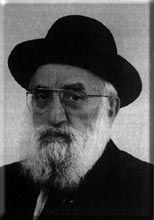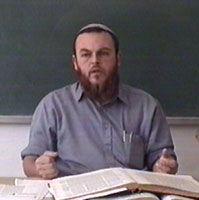Beit Midrash
- Sections
- Chemdat Yamim
- Parashat Hashavua
- Torah Portion and Tanach
- D'varim
- Ekev
The luchot are mentioned twice in this week’s parasha. The first time (Devarim 9:10-11) is in the context of the first giving of the Torah at Sinai. However, these luchot were smashed by Moshe (ibid. 15-17). The second time, it says that Moshe was entrusted with quarrying the stones, while Hashem wrote on them "kamichtav harishon (like the first writing)" (see ibid. 10:1-4). (We will not discuss if the same or a newaron was used.) In the parallel section in Shemot (32:15-16), the firstluchot are described as being written from their two sides and that the writing was engraved on the stones.
Chazal (Shabbat 104a) explain – in a manner that is very consistent with the p’shat (simple reading) – that there was a great miracle here. The letters were cut into the stones through and through, which meant that those letters that have an inner part that is detached from the outer part (such as samech and a final mem) were suspended in air by means of a miracle. Rashi on the Torah said that there was an additional miracle, that these engraved words could be read from opposite sides of the stone in their natural order.
The first miracle brings us to another question. What writing was used for the letters found in the luchot? Nowadays, our sifrei Torah and for the most part our printed material, use characters that are calledK’tav Ashurit. However, the old Hebrew writing, which is known asK’tav Daatz, was very different, including that different letters in the respective alphabets have a hollow part to them. The aforementionedgemara, which refers to samech and mem as needing the miracle to exist in the luchot form, is assuming that K’tav Ashurit was used. The Yerushalmi (Megilla 1:(9)) points out that according to the opinion that the Torah was originally written in K’tav Daatz, it was the letter ayin that included the miracle of suspension in air.
It is possible to suggest that there is room for both versions of which letters had a miraculous nature, as it is possible that the two sets of luchot used different characters for the same content. The Torah writes that the second luchot were written kamichtav harishon, while it does not say, kaktav harishon (in other words, the content rather than the lettering was the same). They both also employed miracles, as Moshe relates that it was Hashem and not himself who wrote on the tablets even the second time.
Let us pray to Hashem that He should continue to protect us with miracles, whether they be revealed ones or hidden ones.

Monotheism in Egypt?! Yes!
Various Rabbis | Tevet 5768

Parashat Hashavua: “Kings Will Descend from You”
Rabbi Yossef Carmel | Kislev 5786

Parashat Hashavua: Can One Give a Loan to Hashem? – part I
Rabbi Yossef Carmel | Elul 5785

























